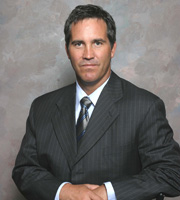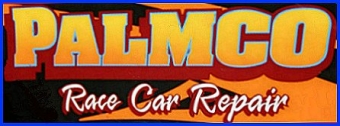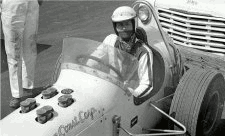Can Bernard Turn Around Indy Racing?
ByI think many, myself included, were a little surprised when the IndyCar Series decided to look outside of the racing world to select its new CEO, Randy Bernard. In fact, Bernard had not even seen an IndyCar race before taking the reins of the series back in March. The move has certainly raised the hopes of many in the racing community that have longed for a new direction for years now. The IndyCar Series was formerly run by Tony George since its founding in 1994. Last year, George retired / was fired by his own mother / up and told the world to pound sand (circle your preferred answer), opening the CEO position up to a fresh face.

Randy Bernard, CEO of the IndyCar Series. (pbr.com)
Now, to be sure, Bernard brings some mighty fine credentials to the table. He helped build the Professional Bull Riders from nothing to its current level of popularity, which bodes well for Indy racing. But Bernard may be in for one of the biggest professional challenges of his life. For if George -- who had full access to the Indianapolis Motor Speedway cookie jar -- couldn't keep this thing afloat, how will Bernard -- a complete outsider to motorsports -- have the resources and insight to turn it around?
With only two months in, it's obviously impossible to draw any firm conclusions about Bernard's impact on the sport. All we have to go on are the things he's said and done so far. From what I've gathered, this has primarily amounted to 1) A desire to re-connect with grassroots racing while fielding the "best drivers in the world"; 2) Learning and absorbing from Indy car insiders (read: the team owners); and 3) An open mind to try new and different things.
Let's look at each of these things individually, starting in reverse. I pray that trying new things isn't a veiled reference to "The Gimmick". The Gimmick has been employed hastily over the past couple of years, much to the chagrin of anybody with a sense of dignity and uprightness (think red and black tires, power-boost buttons... ohh I don't know... "Danica Mania!"). These silly superficial things only serve to harm the integrity of the sport (though they do generate a hearty laugh, let's give it up for that). Please please please no more gimmicks.
The second point is an easy one. If Bernard is learning the Indy ropes from the team owners, we're doomed. Remember, these are the very people that drove this sport into the ground over the past three decades. To them Indy racing is a hobby you do between jet-setting and eating fine caviar. They are so detached from motorsports reality that the closest they should be to the engineer is in the caboose -- if they should be allowed on the train at all. (Okay except A.J. Foyt, who can be kept on as Sergeant at Arms.)
And that all brings us to the crux of the matter: grassroots racing. And since I feel my blood pressure rising with each sentence I type I'm going to cut to the chase. The problem with Indy racing is NO FANS. That's it. And it amazes me how few people up at the top of the ladder out there in Indiana understand that this is the root problem. No fans. (Okay, "few fans" since I feel generous today.) There are so few fans because there is so little interest in the racing and the drivers have so few fans. NASCAR drivers have more fans on Facebook than IndyCar drivers have fans in the stands.
Imagine if the New York Yankees had no fans. What would that look like? Well the stadium would be empty and the merchandise wouldn't sell and the team would fold up quicker than a cheap camera. But in Indy racing, the team owners think that as long as they have money they can still go out and race and so what's the big deal?
So why has the Indy racing fan base shriveled up? Simply because the racing is so far disconnected from American grassroots racing that Americans just don't care anymore. After years and years of ride-buying and revolving-door drivers the fans have lost interest. So when Bernard talks about having the "best drivers in the world", I sure hope he's talking about the Jeff Gordons and Tony Stewarts rather than the Milka Dunos or he's going to find himself bucked from his seat quicker than Betty White from Bodacious.
In America, grassroots racing is about oval racing. Sprints, late models -- all that good stuff. Dirt, asphalt. Give us a driver that says, "just one of them racin' deals", and we're all good. Drivers we don't know and can't relate to riding around a one-lane temporary street course in downtown Baltimore doesn't float our boat. (Note: Karting does not count as a popular form of grassroots racing. I'm sure it's a great place for drivers to start their careers, but all across the country fans go to see oval racing week in and week out.)
So why don't American grassroots drivers make it into Indy car racing? First is they don't have the money or a sponsor. The second is that their skill -- race cars on ovals -- does not translate well to Indy cars -- which are formula cars on road courses. And because of that they have so few opportunities. So instead they're picked up by the NASCAR teams who can easily secure a sponsorship for them since they can both drive the wheels off their cars and easily relate to fans.
I hear the Indy car is getting a major makeover for the future. Now is the perfect opportunity to develop something that is not designed for road courses. Something that young drivers who cut their teeth on American short tracks can hop into and excel with. Without that connection Indy racing will always be detached from American racing fans and be forced to settle for late-day coverage on the Versus network. And oh yeah... the last time I checked the Indianapolis 500 was an oval race. Let's showcase the best oval drivers in the world.
Best of luck Randy!

